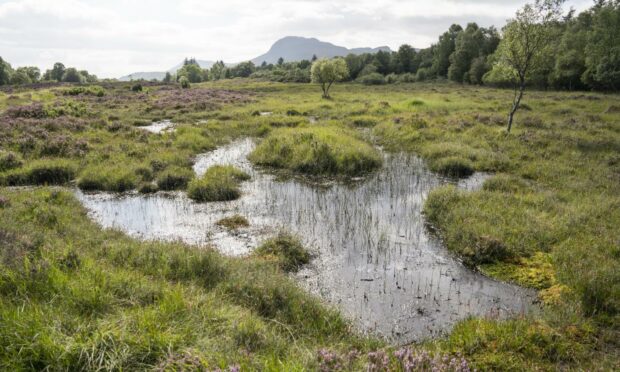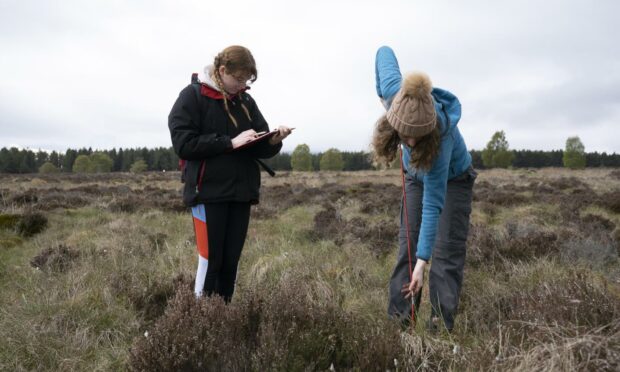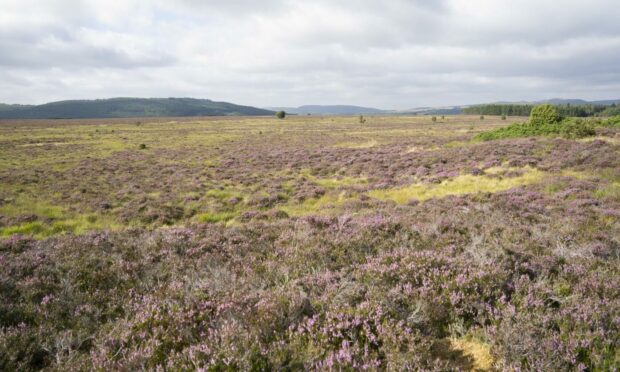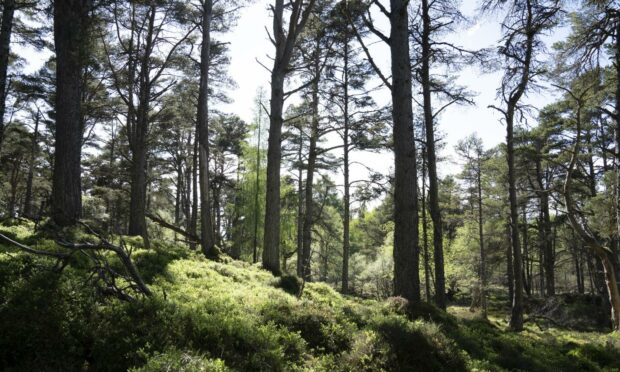A rewilding estate in the Highlands has discovered it is a net source of damaging greenhouse gas emissions.
Research carried out at the Bunloit Estate at Loch Ness shows carbon emissions from peatlands more than cancel out sequestration by woodlands.
The “unsettling picture” is being presented tonight to the COP26 climate conference, along with plans to reverse the situation.
This includes peatland restoration, felling non-native conifer plantations on top of peat bogs and planting native broadleaf trees.
What does the research reveal?
The 1,262-acre Bunloit Estate was bought last year by Dr Jeremy Leggett, former scientific director at Greenpeace.
It has since set up the Bunloit Rewilding Project to increase carbon sequestration and biodiversity.
The research shows an estimated 866 tonnes of carbon dioxide equivalent (tCO2e) a year is being sequestered in woodlands and grasslands covering 86.3% of the estate.
But open peatlands, which cover around 13.7%, are responsible for an estimated loss of 1,106 tCO2e annually.
This means an estimated average net loss of 240 tCO2e a year for the estate.
It estimates measures to reverse the situation will save a net 60,747 tCO2e over 100 years.
Ben Hart, who manages carbon and biodiversity accountancy, said: “We find an unsettling picture of a verdant estate, replete with healthy woodlands, being a net source of greenhouse-gas emissions, with an estimated average net loss of 240 tCO2e a year.
“We have two main routes to reversing this most undesirable state of affairs.
“The first is to fell non-native conifer plantations sitting atop the peat, letting the compressed bogs ‘breathe’ again, with healthy moss growing and drawing carbon dioxide down into the wetland.
“Meanwhile (we will be) planting broadleaves elsewhere on the estate to compensate for the carbon stock loss in the plantations.
“The second is peatland restoration, in particular by blocking drainage channels so as to promote moss growth by retaining water in the bogs.”
Research can support efforts to tackle climate change
Mr Hart says it is predicted carbon reduction from peatland restoration and extra sequestration from new planting will mean a net saving of 92,350 tCO2e over 100 years.
But carbon lost from clear-felling, amounting to 31,603 tCO2e, brings the net saving to 60,747 tonnes over a century.
Bunloit says it hopes the report can support government objectives in addressing the climate and biodiversity crises.
It intends to present updates of its work to future climate summits.
Dr Leggett, founder and acting chief executive of Bunloit Rewilding, said: “We hope the evidence shines through in our report that the process of returning to the natural state we seek will render the landscape quantifiably better at sequestering carbon and building biodiversity than the current estate.
“Our aim is to use that process to help make nature-based solutions more investible than they seem to be today, quicker than would otherwise have been the case.
“We also hope that in so doing we can provide a beacon for hope that humankind can ultimately not just survive but prosper as we arrest climate meltdown and reverse biodiversity collapse.”
Rare species discovered
The research also showed Bunloit is of international importance in terms of lichen communities, and of regional importance for unimproved grasslands.
Wildlife on the site includes sika, roe and reed deer, wild boar, badgers, foxes and red squirrels.
There are also 77 bird species and six of the 10 bat species known in Scotland.
Other finds included a rare butterfly, the pearlbordered fritillary, and 11 of the 19 dragonfly and damselfly species in the Highlands.
The Bunloit project has led to the setting up of the nature recovery company Highland Rewilding.
In September, it launched a crowdfunding scheme to allow people to buy into rewilding projects in the area.
Earlier this month, Highland Rewilding announced plans to create a ‘Forest of Hope’ as a model for fighting the climate and biodiversity crises.
The collaboration with rural regeneration charity, the Cabrach Trust, will deliver a new woodland across the border between Aberdeenshire and Moray, as a COP26 legacy.



